"I think of horror films as art, as films of confrontation. Films that make you
confront aspects of your own life that are difficult to face. Just because
you're making a horror film doesn't mean you can't make an artful film." |
David Cronenberg |
Back in 2004 (man, was it really that long ago?), when I reviewed the Sommerville House American DVD release of David Cronenberg's second commercial feature Rabid, I fondly recalled how a birthday viewing prompted me to elevate its director to the status of a Horror God. There were quite a few of them back then, the 1970s being a rather wonderful time for North American horror cinema. George Romero, Wes Craven and Tobe Hooper had paved the way with three of the most striking breakthrough feature films in the genre's history, and a number of new and distinctive talents were emerging in their wake. But Rabid, like its predecessor Shivers, was different from its contemporaries. There was something new at work here, a fascination with disease and mutation and with sex as a potentially destructive force, horror presented not as an external force but something that came from within. For some years at least, these themes would be instrumental in defining what constituted a David Cronenberg film.
Having already covered the film in some detail, my usual practice would be to refer you to that earlier review or reproduce it here, but coming back to Rabid after a gap of several years – particularly looking as good as is does here – was almost like seeing it again for the first time. For the most part I still stand by what I wrote back in 2004, thus much of what follows has been adapted from that review and expanded on. But my opinion on some points has subtly changed, and I do feel I am even more receptive than I ever was of the film's numerous and substantial qualities, and thus find myself with some new points to make.
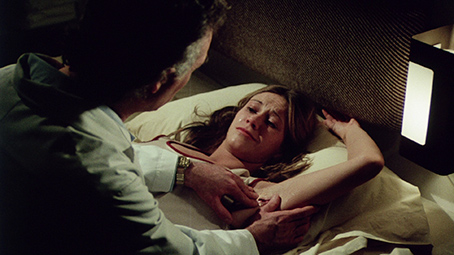
So let's start with some plot. Hart Read and his attractive girlfriend Rose are out for a motorcycle ride when a stalled vehicle forces them to swerve off the road. In the ensuing crash, Rose becomes trapped under the flaming bike and suffers life-threatening burns to her torso. The accident is seen by one of patients at a nearby cosmetic surgery clinic, and an ambulance is immediately dispatched to transport Rose to the facility, where her condition is stabilised and an experimental skin grafting technique is used to treat her injuries. While the operation initially appears to be a success, Rose's body has undergone a biological change, resulting a pathological need for human blood that she is able to extract via a spiked protrusion that has formed under her armpit. The attacks do not kill, but contaminate the victims with a rabies-like disease that they spread by wildly assaulting and biting others.
Although often cited has Cronenberg's second feature, Rabid was actually his fourth – Stereo and Crimes of the Future may be underground films, but at 65 and 70 minutes in length respectively, both are technically still feature-length. But it was Shivers that saw Cronenberg really starting to hone what would become his trademark themes and style, and was the first of his films to receive widespread distribution both on and outside of his home turf. One could argue that neither Shivers nor Rabid are quite as technically polished as his later works, but revisiting the film I was struck by just how controlled and precise Cronenberg's direction is here. It certainly has a recognisable 70s low-budget horror aesthetic, but there's still the strong sense that every shot and edit here has been thoughtfully planned and executed (well almost – I'm still convinced that the mid-operation cutaway to Murray and Hart sitting in silence as they drive to the clinic is only there to enable Cronenberg to shorten the scene that it briefly interrupts). Little if anything feels ragged here, and it's this blend of technical know-how with do-it-yourself energy that made the best genre films of this period so appealing.
That said, the screenplay does lack the sort of in-depth intellectual banter you'll find in almost all of Cronenberg's works from The Brood onwards, but there are no naff lines and some of the dialogue is considerably smarter than I remember. The medical aspects in particular are convincingly sold – I may not always be clear about what is being discussed, but I was always left with the sense that the characters believe what they are saying, and that's all that matters. The music score lacks the mournful moodiness that Howard Shore would bring to so many subsequent Cronenberg films, being comprised almost entirely of library track selected by executive producer Ivan Reitman (yep, the very same one who directed Ghostbusters), some of which had already found its way into the Reitman produced 1976 home invasion thriller Death Weekend. Intermittently they work well, but the piercing crescendo blasts that accompany shock moments are crude in a way that the music scores on Cronenberg films are generally not.
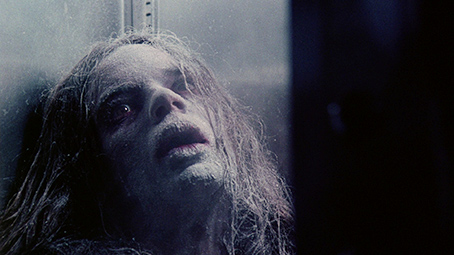
But this is still a seriously accomplished film, and far more than the simple exploitation genre piece it was generally labelled on its initial release. Working almost as a companion piece to Shivers, the story allows Cronenberg to once again explore the relationship between sex and disease in a way that can't help but be seen as prefiguring the spread of AIDS, but he also throws in a critique of experimental surgery techniques that anticipates present-day stem cell research. His fascination with the corruption of the body is taken a step further on from Shivers, with the new organ that develops under Rose's armpit – a spiked phallus buried in an anus-like orifice – playing most effectively as a deadly metaphor for dangers of sexually transmitted infections. This also ties up with the film's strong vampiric element, with Rose's pathological need for human blood (the blood of a cow and regular food make her physically sick), her addict-like withdrawal symptoms, and the sexual nature of the encounters that lead to the feeding – here a reversal rape in which the male is penetrated by a female phallus – playing as strikingly inventive twists on some of the sub-genre's key elements. But Rose's condition is medical rather than supernatural and her 'bites' do not create new vampires but instead spread a disease that she herself is immune to, a human mosquito whose role as a modern day Typhoid Mary is directly referenced here.
In my earlier review I claimed that when it came to the performances, the film was a bit of a mixed bag, but coming back to it I'm no longer convinced of that statement. While Rabid lacks the sort of dynamic lead turn that would soon to become a characteristic element of Conenberg's work (think James Woods in Videodrome, Jeff Goldblum in The Fly, or Jeremy irons twice over in Dead Ringers), former porn star Marilyn Chambers does a sterling job as Rose in what proved to be her only 'straight' role, her impressive physicality as a performer especially evident when her character is in pain. Particularly surprising, given her usual line of work, is that Chambers most convincingly presents Rose as an innocent, an infector who does not understand the change that she has undergone and whose attacks are carried out not in a fit of predatory rage but in the supposedly safe and comforting warmth of an embrace. There's some solid work as well in the supporting cast, with Howard Ryshpan nicely understated as Dr. Dan Keloid (a wittily selected surname whose definition relates directly to his profession), and Joe Silver gruffly convincing as Hart's intriguingly named friend Murray Cypher. There are also a couple of familiar faces hovering in the wings, with Gary McKeehan – the shining light of the Cronenberg short The Italian Machine and later to take a memorable small role in The Brood – popping up as truck driver Smooth Eddie, and making his first brief appearance in a Cronenberg film is the wonderful Robert Silverman, later to play a succession of affected eccentrics in The Brood, Scanners and eXistenZ. Even my earlier dissatisfaction with Frank Moore's glum and charisma-free Hart was mellowed by a listen to the second commentary track on this disc, where film writer William Beard explains that Canadian film heroes tend to differ markedly from their American equivalent in that they are largely ineffective in that role and unable to significantly impact on the outcome of the narrative. In this context, Moore's portrayal of Frank makes a lot more sense.

While the story is initially confined largely within the walls of the clinic, once Rose sets off on her own and the virus begins to spread, Cronenberg works small miracles with minimal resources, creating a very convincing sense of a city in panic and under martial law. The make-up effects are also surprisingly effective, with the close-ups of Rose's under-arm protrusion having a nicely yucky feel, while the most wince-inducing moment – a doctor's fingers being cut off with scissors – is actually hidden under surgical gloves and probably the cheapest effect in the film.
In many ways Rose is a typical Cronenberg protagonist, an innocent who is affected by an event that will cause her to undergo drastic mental or physical change and probable death. Like Jeff Brundle in The Fly, Beverly Mantle in Dead Ringers and Max Renn in Videodrome, the seeds for her (self-) destruction are sown at an early stage, and others get caught in her subsequent downward spiral. In common with those films, Rabid is certainly downbeat in tone, but as the infection spreads the film takes on a more apocalyptic feel than the director's more character-focussed later dramas, aligning it more with George Romero's The Crazies and Dawn of the Dead, Jeff Leiberman's Blue Sunshine and, of course, Cronenberg's own Shivers, where a single apartment block became a microcosm for society at large. It's this sense of scale, together with its 70s low-budget edginess, that marks it apart from the director's later works.
While Cronenberg has made more technically polished, more intellectually layered and more dynamically performed films than Rabid, it remains to this day one of my personal favourites, and if anything has actually gone up in my estimation since I last set eyes on it. Structurally it's as carefully planned and paced as anything he's done since, and despite the dark tone has its share of black humour, from the runner whose track suit bears the legend "Jogging Kills" to the almost gleeful shooting of a shopping mall Santa. My favourite, however, is the health advisor who, when asked what people can do to protect themselves against the virus, pragmatically responds, "Don't let anyone bite you."
Rabid has always looked just a little grubby on home video and it's way too long after the event for me to remember how it looked in the cinema (although the notes on the transfer included here state that every effort was made to match the original's colour timing). Dgitally restored in High Definition by Lionsgate using materials supplied by the Toronto International Film Festival Group, the 1.78:1 HD transfer here initially plays to expectations created by those earlier incarnations, particularly in the dominantly earthy hue of the colour palette and the lack of vibrancy of some of the scenes. But stick with it and you'll soon appreciate the considerable improvements that have been made over previous home video editions, especially evident in a level of detail that far exceeds that of its DVD predecessors (this is particularly true of the Sommerville House DVD, which was non-anamorphic NTSC). The image is almost spotless and sits rock solid in frame, and as the film progresses it becomes clear that its toned-down colour palette is partly the result of the almost monotone decor of some of the locations and the drab winter clothing worn by the characters – the bright red of a workman's truck and the Santa Claus costume are vividly rendered, and exterior neon signs are appropriately colourful. The contrast range is well enough balanced when the lighting is favourable, but can feel a little aggressive in some darker scenes. On the whole, though a very solid job.
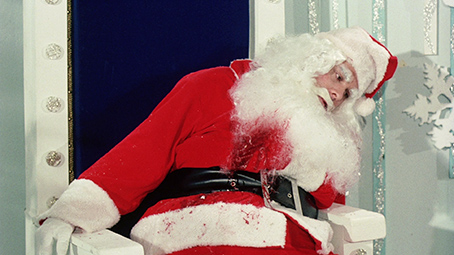
The Linear PCM mono track has the expected range restrictions, with little in the way of solid bass response, something as evident in the dialogue as the sound effects. But for a low budget genre film of this vintage it's otherwise in very good shape, with no obvious background hiss or hum to contend with, and there is no distortion on those musical crescendos.
There's also an isolated music and effects score for those who enjoy that sort of thing.
David Cronenberg commentary
This has been ported over from the Somerville House DVD, but I've no problem with that – Cronenberg always delivers first-rate audio commentaries and this is no exception. A perceptive and knowledgable speaker who has the sort of velvety voice I could listen to all day, he shares a ton of interesting and revealing information on the film and its making, and is occasionally dryly funny, as when he says of the film's subway attack, "Now who hasn't been on a crowded subway and wanted to bite someone's ear off? I know that I've certainly wanted to do that many times." As someone who has no time for the so-called 'festive season', I also warmed to his claim that "Shooting Santa Claus is irresistible for anyone who hates Christmas." He talks extensively about the scientific aspects of the film, with his early training in bio-chemistry providing plausible explanations for the medical processes used, and even for Rose's transformation. He also discusses the contribution made by executive producer Ivan Reitman, and devotes much of the first few minutes to talking in depth about one of his favourite subjects – motorbikes. Particularly useful for those without a grounding in Canadian political history is his detailed coverage of the paramilitary separatist group Front de libération du Québec (referred to here as the FLQ), and what became known as the October Crisis, which was the inpiration for the film's depiction of Quebec under martial law. An excellent inclusion and the best and most enthralling of the special features here.
William Beard Commentary
Author of The Artist as Monster: The Films of David Cronenberg William Beard provides a busy and detailed scene-by-scene analysis of the film, one littered with interesting observations, useful background on the film and its production, and sometimes intriguing opinion. Beard is a good and enthusiastic speaker, and is really adept at highlighting elements that might just have otherwise flown under your radar – it's here that I first encountered the concept of the ineffectual Canadian film hero that I mentioned above. What I did take issue with was his claim that the film's refined visuals and editing were not the sort of thing you saw in other low budget horror films of the period such as – wait for it – The Texas Chainsaw Massacre, one of the most visually striking and immaculately edited horror films ever made. A short while later he notes Cronenberg's use of a tracking shot to create mood, and again claims that this is something you don't find in other low-budget genre films of the 70s. Erm, Texas Chainsaw again, sir. Otherwise, a damned good extra.
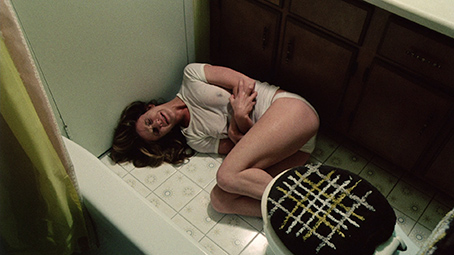
David Cronenberg interview (20:39)
Also ported over from the Somerville House DVD, this interview with Cronenberg is another very worthwhile inclusion. Here the director discusses the problems he had with the Canadian government following the release of Shivers and the effect it had on his own film career; the development of Rabid and his own (temporary) doubts about the project; the learning process that the film proved to be; his views on Marilyn Chambers' shifty botfriend and manager Chuck Traynor; and the politics of the reaction to the film. Pleasingly, there is little duplication of commentary material, save for his discussion on the casting of Marilyn Chambers (though even this is expanded on from the commentary version). Enthralling, as ever.
Ivan Reitman Interview (12:29)
A typically upbeat Ivan Reitman explains how he first got into the film industry and recalls joining Cinepix and working with Cronenberg. There are some interesting stories here, not least his revelation that he directed some scenes of Death Weekend after actress Brenda Vaccaro stopped talking to director William Fruet, and the fact that he would have nothing to do with the company's notorious Ilsa series, a step too far in the realms of exploitation for a man who had relatives in the Nazi concentration camps. Intriguingly, he reveals that at one point his company had the rights to make a film version of The Hitchhiker's Guide to the Galaxy and that an enthusiastic Cronenberg was slated to direct, all of which fell through when Mel Brooks offered Cronenberg the chance to direct The Fly.
Don Carmody Interview (15:37)
Producer Don Carmody kicks off with an interesting tale of how he got started in film (one that illustrates just why you should jump at every opportunity that's offered in this most unpredictable of businesses), then moves on to his time at Cinepix and the trouble that the notoriety of Shivers caused for everyone (as non-Canadians, he and Reitman were hearing calls for their deportation). His memories of the Rabid shoot are also engaging – like Cronenberg he was less than comfortable with Marilyn Chambers' manager-husband Chuck Traynor, and reveals that Chambers kept expecting to have to take her clothes off during the shoot. I was particularly amused by his stipulation that they should not select any locations that were situated close to a stereo store or a motorcycle shop, "or I could lose David for hours on the way to the set."
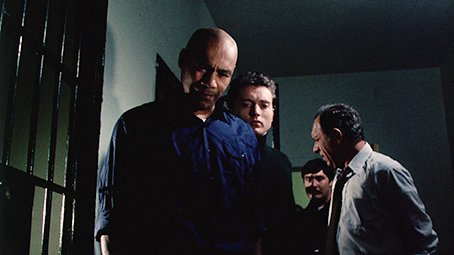
Joe Blasco Interview (3:11)
A too-brief but stlll engaging chat with the film's special makeup artist Joe Blasco – who still has the moulds for Rose's underarm anus and the penile spike – about his work on a film he still holds in high regard.
The Directors: David Cronenberg (59:04)
Becoming a regular feature on recent Arrow discs, this episode of The Directors takes a potted trip through Cronenberg's filmography, highlighting some films and skipping over others. It's constructed, as ever, around a worthwhile interview with the man itself and features positive contributions from several of the actors he's worked with, including Marilyn Chambers, Willem Dafoe, Deborah Harry, Peter Weller, Jennifer Jason Leigh and Holly Hunter. There are plenty of interesting memories here, but my favourite has Michael Ironside explaining why everyone used to make a hasty retreat when Cronenberg said the words, "I had a dream last night..."
Raw, Rough and Rabid (15:04)
Canadian critic Kier-La Janisse provides a concise history of Cinepix and highlights a few of their key films, including Death Weekend (I was chuffed that she is also a fan – the film too often gets dismissed in critical circles), the taste-busting Ilsa: She Wolf of the SS and notorious slasher My Bloody Valentine. Rabid's make-up effects artist Joe Blasco also pops up to recall his work on Cinepix productions, especially Ilsa.
Trailer (2:10)
Though a bit dusty, the trailer here is in reasonably good shape. Voiced by one of those Trailer Voice Men, there are some smile-prompting moments, my favourite being "Don't scream. Don't panic. He's dead. And the dead can't hurt the living." OK then. It's still a pretty good sell, and very much a product of its time.
Booklet
Plenty of good stuff in here. In Plastic Surgery Disaster: Rabid, The October Crisis and the Pathological Body Politic, Canadian critic and writer Kier-La Janisse (she's interviewed on the disc if you want to put a face to the name) explores the politics of the film and particularly the way it reflects how the actions of the FLQ impacted on Canadian society. There's a useful extract from the Faber and Faber book Cronenberg on Cronenberg (which I heartily recommend) in which he discusses the shooting of Rabid, and a welcome interview with Marilyn Chambers, apparently conducted by Dr. Calum Waddell. Doctor? Outstanding. The main credits for the film, notes on the transfer and a number of stills have also been included. Nice.
Rabid was always one of my favourite Cronenberg films, but this time around I felt my eyes had been opened to elements that had previously simply not registered. The budget does show, but in no way impacts negatively on the film, and it really does stand as one of the smartest and most imaginatively realised of the bountiful crop of late 70s North American horror favourites. That earthy colour cast from before is still present in many scenes, but if the transfer notes are correct (and why the hell would they not be?) then this is how the film originally played, and in all other respects it looks just fine. Great film, strong transfer, terrific extra features. Arrow hits another home run. Highly recommended.
|